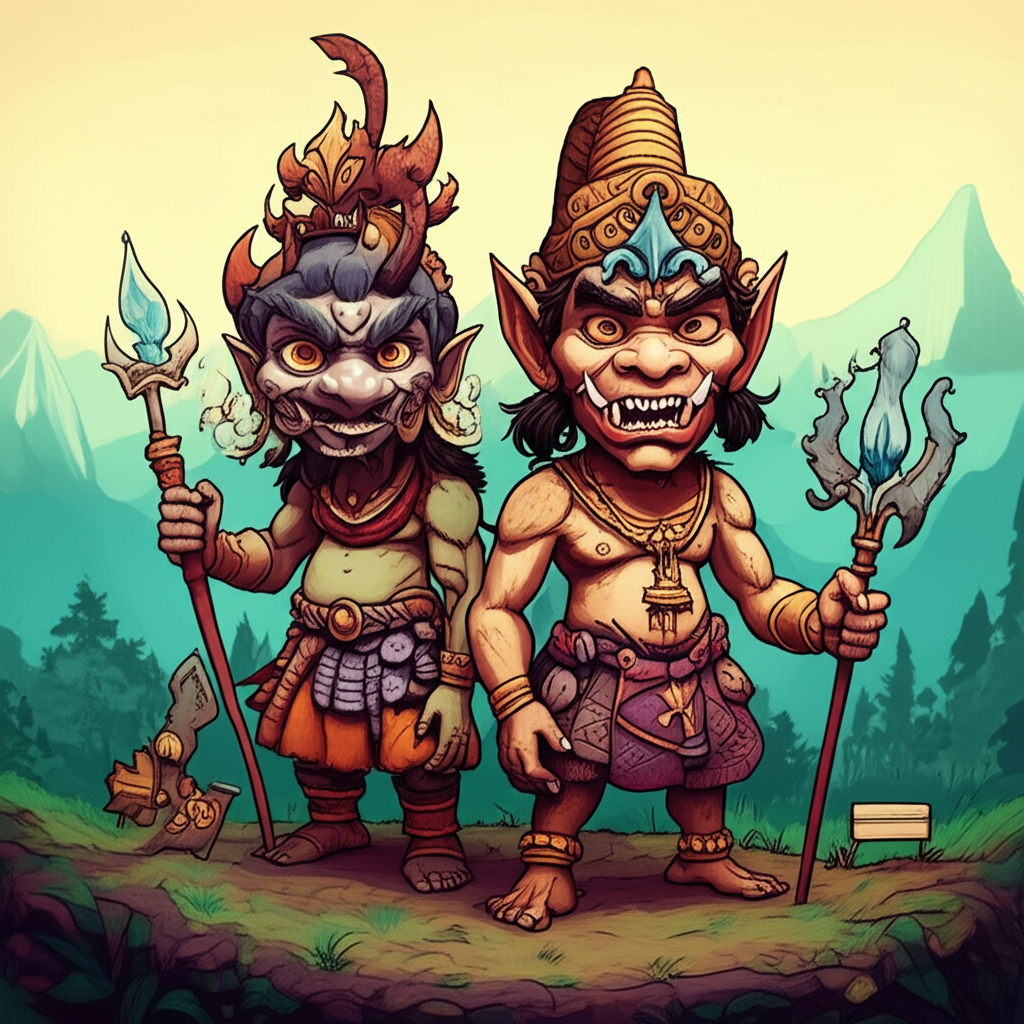
The mist-shrouded slopes of Gunung Tangkuban Perahu, a majestic stratovolcano in West Java, Indonesia, have long been a canvas for the vivid tapestry of local folklore. Among the most enduring tales whispered by generations are those concerning the Genderuwo, enigmatic beings said to inhabit the ancient forests and hidden caves of this sacred mountain. These narratives, born from the fertile imaginations of past communities, offer a fascinating glimpse into how ancient peoples sought to understand their world, their fears, and the potent forces of nature that surrounded them. It is crucial to remember that these are traditional stories, the product of cultural storytelling, not factual accounts.
The origins of the Genderuwo myth are deeply rooted in the animistic beliefs that predated the widespread adoption of Islam in Java. During the eras when these stories were first shared, the natural world was often perceived as alive with unseen spirits and powerful entities. Mountains, dense forests, and deep ravines were considered potent places, inhabited by beings who could influence human lives, both for good and ill. The Javanese worldview was one where the physical and spiritual realms were intimately intertwined, and the boundaries between them were fluid. These beliefs provided a framework for explaining the unexplainable – sudden storms, unexpected encounters, or the unsettling sounds that echoed through the wilderness. The Genderuwo, in this context, emerged as a manifestation of the untamed, the mysterious, and perhaps the more primal aspects of the natural environment that the people of that time both revered and feared.
The Genderuwo, as depicted in these traditional tales, is a creature of imposing stature and formidable presence. Often described as large, hairy, and ape-like, with glowing red eyes and long, sharp claws, they are creatures of the shadows, more often heard than seen. Their appearance is symbolic, representing a raw, untamed power that lies beyond human comprehension. The hairiness can be seen as a connection to the dense, overgrown forests, while the glowing eyes suggest a supernatural insight or an ability to perceive the world in ways humans cannot. Their immense strength is a metaphor for the overwhelming power of nature itself – the force of landslides, the ferocity of storms, or the sheer resilience of the wilderness. They are not typically portrayed as inherently evil, but rather as beings driven by their own instincts and a connection to the ancient earth.
One recurring narrative tells of a hunter, perhaps a young man seeking to prove his courage or a seasoned woodsman venturing deep into the Tangkuban Perahu wilderness. As twilight descends, casting long, eerie shadows, he finds himself lost. The familiar paths disappear, and the rustling of leaves takes on a menacing quality. Suddenly, a guttural growl echoes through the trees, a sound that chills him to the bone. He glimpses a towering, shadowy figure moving between the ancient banyan trees, its form indistinct in the fading light. The air grows heavy, and a primal fear grips him. The story might then describe the hunter attempting to appease the creature with an offering of food, or perhaps simply hiding in terror until the first rays of dawn break through the canopy. In some versions, the Genderuwo might even guide the lost hunter back to safety, not out of kindness, but perhaps as a playful, albeit terrifying, display of its dominion over the mountain. The encounter is always fraught with tension, a test of the human’s respect for the unseen forces of the forest. The narrative emphasizes the sheer power and mystery of the Genderuwo, its ability to instill fear and awe in equal measure.
The symbolism embedded within the Genderuwo myth is multifaceted. The creature can be interpreted as a personification of the untamed wilderness, a reminder of humanity’s smallness in the face of nature’s grandeur and unpredictability. The fear it evokes can represent the natural human apprehension of the unknown and the dangers lurking in the natural world. In some interpretations, the Genderuwo might also symbolize the primal instincts that reside within humanity, the wilder aspects of our nature that are often suppressed in civilized society. They could also represent a form of guardian, protecting the sanctity of the mountain from those who would seek to exploit or disrespect it. The stories might have served as cautionary tales, encouraging respect for the environment and warning against excessive ambition or intrusion into sacred spaces.
In contemporary times, the Genderuwo of Gunung Tangkuban Perahu continues to capture the imagination, albeit in a different context. These myths are preserved and reinterpreted in literature, particularly in local folklore collections and fantasy novels that draw inspiration from Indonesian mythology. They have also found their way into popular culture through films, television series, and video games, where the Genderuwo often serves as a formidable antagonist or a mysterious entity. Cultural studies scholars analyze these stories as valuable insights into the historical beliefs, societal anxieties, and imaginative expressions of past Javanese communities. The Genderuwo, once a figure of primal fear and respect, now often exists as a cultural icon, a testament to the enduring power of storytelling.
In conclusion, the tales of the Genderuwo of Gunung Tangkuban Perahu are a rich part of Indonesia’s cultural heritage, weaving a narrative tapestry from the beliefs and experiences of ancient peoples. These stories, rich with imagination and symbolic meaning, offer a unique window into how past communities understood the world around them and their place within it. As Muslims, we recognize that only Allah is the true Creator and Sustainer of all existence. These traditional stories, while fascinating for their cultural and historical significance, are not to be mistaken for divine truth. They stand as powerful examples of human creativity, our innate desire to explain the mysteries of life, and the enduring tradition of storytelling that connects us to our past and enriches our understanding of the diverse cultural landscapes that shape our world.





